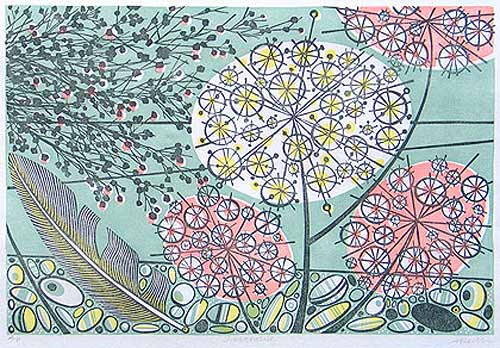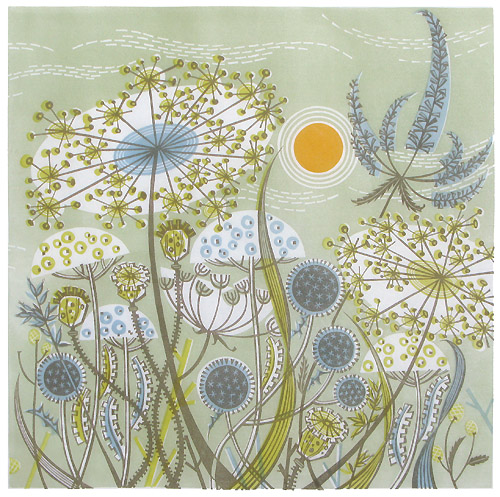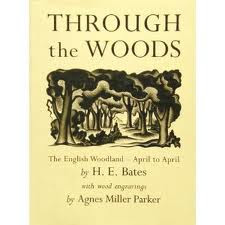 |
| Preface by Angie Lewin |

I now have her book 'Plants and Places' which includes the original sketches she made prior to making the lino or wood cuts which are inspired by the natural environment and the images are based on plant forms found in the landscape, whatever the season - mainly flowerstrewn meadows, a Norfolk saltmarsh or a highland loch in the Cairngorms.

Tiny details are what make Angie's prints so full of vigour and beauty
 |
| Alliums |
Her working life seems to be a balance between meticulous prints and an acute observation of nature. She has an unmistakable style that has developed over the years.
 |
| green meadow |
She says 'There's a craft to printmaking and a series of processes that must be worked through. I enjoy these constraints. I enjoy seeing the transformation from drawn line on paper to the cutting of a line in lino or wood and then the crisp line printed on paper; the challenge of positive and negative shapes and working with the image reversed.'
 |
| st. pauls - linocut |
 |
| lichen and thrift |
 |
| Eric Ravilious mug |

The Norfolk landscape has been the strongest influence on her work for the last ten years and is the setting for 'Salt' the first novel by Jeremy Page. Page grew up in Norfolk and he captures perfectly the haunting quality of this beautifully bleak landscape and its influence on the character of the inhabitants of this part of the country.

If you look deeper into her work a whole tiny world emerges, where even the most microscopic insect or seed is a marvel of complexity; where a miniscule crevice is as dense as a rainforest.



































